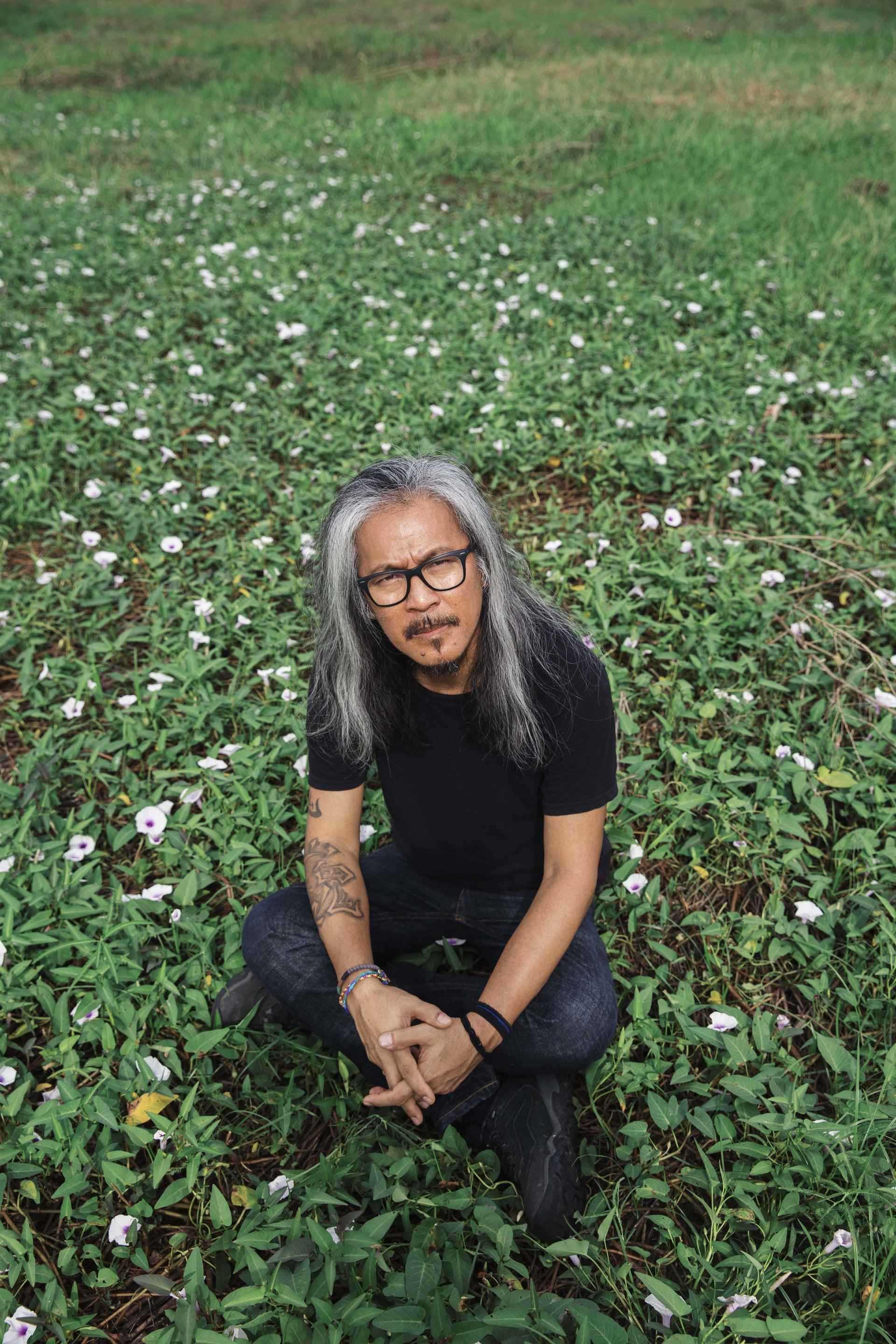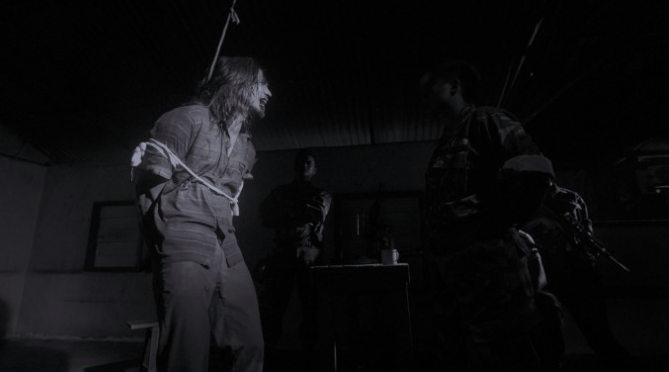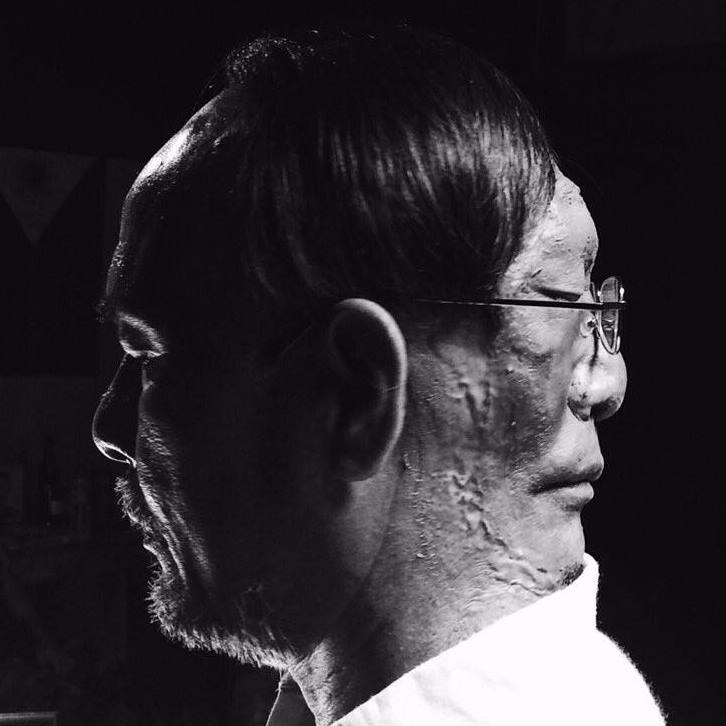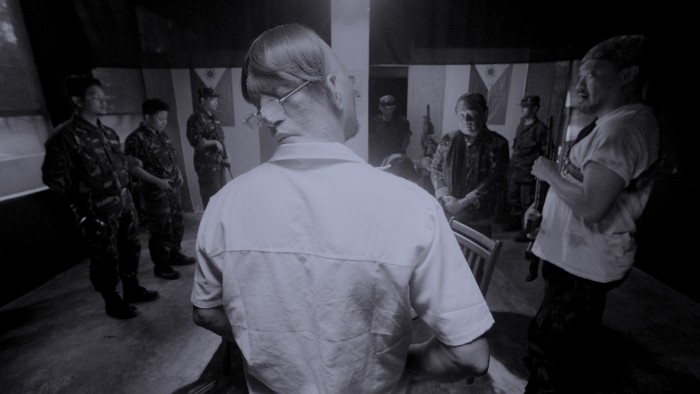It’s been two years since Meryl Streep sat down for eight hours to watch Lav Diaz’s Hele sa Hiwagang Hapis during the 66th Berlin International Film Festival. Well, the actress who acted as that year’s jury president might have been impressed because the film was awarded the Alfred Bauer Prize (Silver Bear), which is given to films that “opens new perspectives on cinematic art.” In the same year, his film Ang Babaeng Humayo bagged the Golden Lion, the top prize, at the 73rd Venice International Film Festival.
This year, Diaz vies for the Golden Bear at the 68th Berlin International Film Festival with his “anti-musical musical” film Ang Panahon ng Halimaw (Season of the Devil). The film is set to compete with 18 remarkable films including Wes Anderson’s awaited Isle of Dogs.
Unlike Streep, German film director and this year’s jury president Tom Tykwer wouldn’t sit for eight hours. Ang Panahon ng Halimaw is, in fact, one of Diaz’s shortest films at a running time of about four hours.
The film has premiered at the festival today. So far, it has been getting rave reviews. In a tweet, Daniel Kasman of Mubi says that it’s the best film he has seen so far from this year’s roster of films in competition. “Few working filmmakers produce such uncompromising work with the singularity of vision that Diaz has maintained, so this one is certain to be a conversation-starter at the 2018 Berlinale,” Indiewire writes in their primer on this year’s Berlinale.

For the March issue of Northern Living, we talked to Diaz, one of the most important Filipino filmmakers, about his cinema. And here are some details about the film.
First of all, congratulations for getting into the Berlinale. How do you feel about it?
It’s for Philippine cinema, ‘yun lang naman (that’s really just it).
Can you tell me more about Panahon ng Halimaw?
Simpleng kwento lang naman ng isang village in the late ’70s—around ’77 to ’79. ‘Yun ang panahon na grabe ang militia sa Pilipinas (It’s a simple story of a village in the late ’70s—around ’77 to ’79). I’ve seen that in Maguindanao. Actually, napaka-brutal sa part namin sa Maguindanao (It was so brutal in our part of Maguindanao). Some civilians were armed by the military. Nag-so-sow talaga sila ng terror sa populace (They sowed terror to the populace).
Pero tungkol saan siya (But what is it about)?
It’s about an activist professor-poet who investigated the disappearance of his wife, an activist doctor who went to the barrios to serve.
So, it’s like an observation?
Cinema is that for me. It’s my engagement with life. It’s a discourse with life.

I’ve read that you started writing the music for the film when you were in Harvard and you’re also using songs you’ve written even before.
During the time of my residency at Harvard—I lived there for eight months, I was writing another script and a cinema book. The script is a gangster screenplay. It’s my first foray into that genre. While at Harvard, grabe ang nangyayari noon [politically] (the political turmoil was at its frenzy). Nandoon ‘yung focus ng isip ko (I was focused on it). Again, parang bumabalik tayo sa era ng martial law (it’s like we’re returning to martial law).
Habang sinusulat ko ‘yung gangster film and the book on Philippine cinema, bumili ako ng mumurahing gitara sa kalsada sa Harvard (While writing the gangster film and the book on Philippine cinema, I bought a cheap guitar along the road at Harvard). I started writing songs. Eventually, like a deluge, [the songs] came. Araw-araw kapag nag-be-break ako sa pagsusulat, nakapagsusulat ako ng kanta (When I go on break from writing, I write songs). Mukhang doon ako hinihila (It’s as if it was pulling me). You know that kind of feeling? Kapag inihila ka (When you get pulled), you have to open it, you have to follow it. I followed it. Ito pala ang hinihingi niya kasi nag-struggle ako sa gangster movie na madaling gawin pero at the same time, hindi ko nararamdaman (This is what I need to do. I was struggling with the gangster film. Although it was easy to write, I didn’t feel any connection with it at the time). Eventually, the songs have come.
I created characters around these songs. I told [my producer] Bianca Balbuena around October or November, sabi ko, “Musical na lang gawin natin. Huwag na muna ‘yung gangster. Ito ‘yung hinihingi ng panahon (I said, “let’s do a musical instead of the gangster film. This is what the moment asks for). Let’s do it.” There’s an urgency to write the songs, the story, to write the characters, and present it to the world even just to the Philippines. Nagulat ‘yung mga actors, “kakanta tayo?” (The actors were surprised, “we’re going to sing?”)
Was it difficult to film because it’s a musical?
Mabilis ‘yung shoot namin. Ang matagal ‘yung preparation. Around November 2016 nakahanda na kami. Nag-shoot kami ng February ng 2017 natapos around the first week of March.
(The shoot was fast. It was the preparation that took long. Around November 2016, we’re already prepared. We started shooting in February 2017 and finished around the first week of March).
It’s still the same. Iba lang ‘yung form. This time, ‘yung kanta ang dialogue nila. Sa umpisa nahirapan kami. Kinakapa namin kung mag-wo-work. Pero habang tuloy-tuloy ang kanta at ‘yung shoot, na-e-embrace nila ‘yun
(It’s still the same. The form is just different. This time, the dialogue is sung. At first, it was difficult. We were weighing if it would work. While we continued filming, they eventually embraced it).
I have a lot of pressures. I have a lot of doubts. I have a lot of fears. Anong mangyayari rito? Although very clear sa akin ‘yung late ’70s is the darkest period of martial law. Pinakanakakatakot na part ng martial law ‘yung late ’70s dahil na-terrorize talaga ng militia ang buong bansa. Fear is hovering the land. Tahimik ang mga tao. Ang daming nag-di-disappear. Kailangan makuha ‘yung point na ‘yun.
(What will happen to this? Although it was very clear to me that the late ’70s is the darkest period of martial law. It was the most frightening part of martial law because the whole country was really terrorized by militia. Fear is hovering the land. People were silent. Many disappeared. We have to evoke that in the film.)
You’re always asked about the length of your cinema.
Laging ganoon eh. ‘Yun na ‘yung naging issue nila. Cinema has been always used to not go beyond two hours or one and a half hours. It’s very conventional. Kapag lumagpas ka doon, mahaba na ‘yun. In fact, they’re just watching TV their whole lives. Mas mahaba pa nga ‘yun. Hindi nila nakikita ‘yun. Kaya ang perspective din ng kultura natin napaka-conventional.
(It has always been an issue for them. Cinema has been always used to not go beyond two hours or one and a half hours. It’s very conventional. When you exceed that, they’d think that it’s long already. In fact, they’re just watching TV their whole lives. That‘s even longer and they can’t see that. That’s why our perspective on culture is so conventional, too.)
But how long is Panahon ng Halimaw?
3 hours and 50 minutes. It’s so short.
Do you ever approach your film like an autobiography?
It’s all autobiographical because it’s personal. ‘Yun ang observation mo sa buhay. In a way, it’s you maliban na lang if you’re doing it for the money. For me, it’s all personal. Laging nandoon ‘yan. Sa Halimaw, ‘yung character ni Piolo [Pascual], part of it ako ‘yun. Ganoon ka when you create character nandoon ka sa lahat.
(It’s all autobiographical because it’s personal. It’s your observation in life. In a way, it‘s you except when you do it for the money. For me, it’s all personal. It’s always there. In Halimaw, Piolo’s character is partially based on me. When you create characters, part of you is in each character.)

You’ve worked with popular actors like Joel Torre, Gloria Diaz, and Angel Aquino in Batang West Side. Pero mas madalas theater o unpopular actors ‘yung ginagamit mo. Now, dumadalas na rin ‘yung mga sikat ang kasali sa pelikula mo. (But most of the time, you cast theater and unpopular actors. Now, your films feature more popular actors.)
Mahirap ‘yung maging elitista ka na ayaw mo sa big stars. If they want to help, why not? Piolo is one of the biggest icons. Bakit ayaw mong gamitin to help? Kailangan i-involve mo sila, tulungan mong mabuksan ang mundo nila. Nandiyan ang masa, we have to educate them.
(It’s difficult to constrict yourself and look down on big stars. If they want to help, why not? Piolo is one of the biggest icons. Why don’t you use him to help? You have to involve them, to widen their perspective. We have to educate the masses.)
In your cinema, laging may otherworldly aspect. Bakit? (Your cinema features otherworldly creatures. Why?)
You do metaphors and symbols. That’s the visual language. It can go anywhere. You do metaphors and symbols to represent symbols.

And here, you have a two-faced creature.
Janus-faced siya, nakikita niya lang ang sarili niya. It represents fascism, people who are full of themselves. Despots sila, they don’t listen to other people. Narcissistic sila. Sa lahat ng salamin, sarili lang nilang nakikita nila.
(He’s Janus-faced who only sees himself. It represents fascism, people who are full of themselves. They’re despots who don’t listen to other people. They’re narcissistic. In every mirror, they just see themselves.)
In your cinema, there’s always the idea of God. Do you believe in God or a Supreme Being?
Agnostic ako. I feel na pwede nating ma-achieve ang concept of goodness, the concept of being fully human and truly altruistic. Kasi nga ang development ng brain ng tao sa evolution, ang pinakamalapit sa atin ay ‘yung chimpanzees. But the human brain is still evolving. The saints [have reached their full potential]. Naabot na nila ‘yung total transcendence, so fully human na ‘yung brain nila. ‘Yung mga mabuting tao, fully evolved na ‘yung brain nila. Kaya may evil sa atin because [most of us haven’t fully evolved yet].
(I’m agnostic. I feel that we can still achieve the concept of goodness, the concept of being fully human and truly altruistic. With the development of our brains according to evolution, the chimpanzees are closest to us. But the human brain is still evolving. The saints have reached their full potential. They have reached total transcendence, so their brains are fully evolved. The reason why evil exists is because most of us haven’t fully evolved yet.)
“You have to examine the past to see why these things are happening now kasi doon galing ang present.”
In this film, you’re going back again to the past. Why is it important?
How can we move forward kung hindi mo nakikilala ang sarili mo? Look at us now. Walang understanding ng nakaraan. Wala man lang dialectical approach sa buhay. You don’t investigate at all, you just accept everything. Parang naghihintay ka lang lagi ng isang taong nakakabayo to save you. Walang dialectical discourse in life kaya ganito tayo. ‘Yun ang importance ng pagbalik sa past sa history. You have to examine the past to see why these things are happening now kasi doon galing ang present. You have to confront that. Bakit ang Pilipinas ganito pa rin kamangmang hanggang ngayon?
(How can we move forward if we don’t know who we are? Look at us now. We don’t have an understanding of the past. We don’t have any dialectical approach in life. You don’t investigate at all, you just accept everything. It’s like you’re just waiting for someone to save you. The reason why we‘re like this is because of our lack of dialectical discourse in life. That’s the importance of going back to the past. You have to examine the past to see why these things are happening. You have to confront that. Why are we still foolish until now? The past will tell you why.)
You can only come to terms if you confront it. Walang coming to terms kung tinatalikuran lang natin. Very recent ang martial law pero nalimot na ngayon. Ang lakas ng denial, ang lakas ng paglimot. Minsan parang deliberate ang paglimot.
(You can only come to terms if you confront it. You can’t come to terms if you just leave it behind. Martial law was so recent, but many have forgotten. The denial and urge to forget are strong. Sometimes, forgetting even seems deliberate.)
You’ve done Norte, Hangganan ng Kasaysayan and Ang Babaeng Humayo, but do you ever see yourself doing more films about the present?
The past is still the future. With cinema, the past is the now. You’re watching the past, the future, and the present. That’s the power of cinema: Everything is now, especially when you watch it on a big screen. It always becomes a zeitgeist: The past, the present, the future are now. That’s cinema.
Do you have any expectations from Berlinale?
Wala. It’s good for Philippine cinema if we win. The interaction alone is good enough.
When are we going to see the film here in the Philippines?
Hopefully, right after Berlin.
Header image from Panahon ng Halimaw, courtesy of Berlinale
Read more:
Lav Diaz’s two-faced creature will give you nightmares
What it’s like to work for the movies and TV, according to cinematographer Neil Daza Charo Santos-Concio is doing a new film
How Brilliante Mendoza is saving Philippine cinema
Writer: OLIVER EMOCLING




